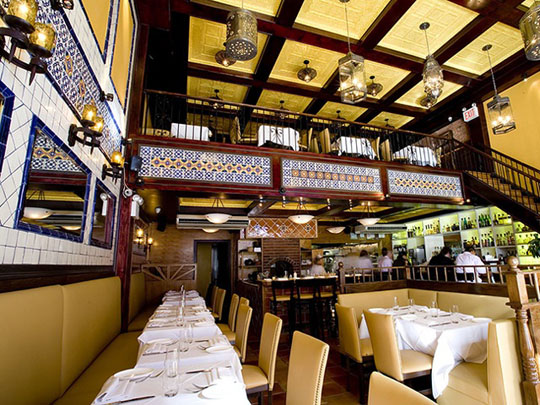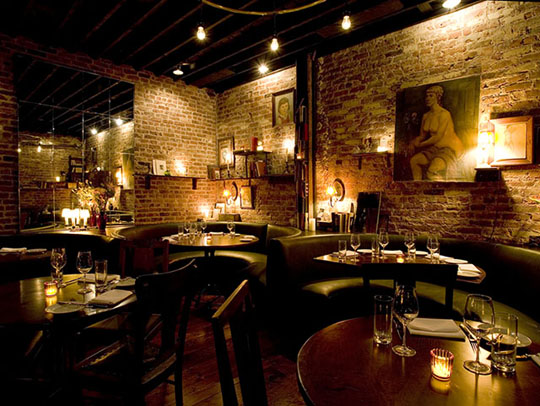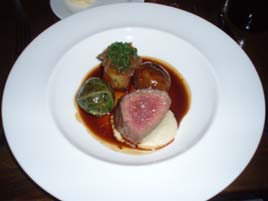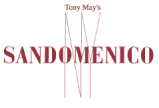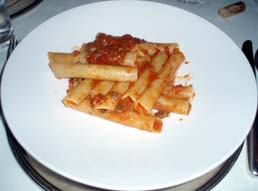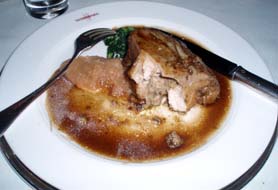Toloache
 Sunday, November 4, 2007 at 10:25PM
Sunday, November 4, 2007 at 10:25PM Note: Click here for a review of Toloache on the Upper East Side.
*
The so-called Mexican food we eat in America is nothing like the real McCoy: that much I learned on a business trip to Mexico City a few years ago. Bulls’ testicles, corn fungus, and fried worms were among the items on order. (I tried the first two, but gave the third a pass.)
At the new midtown restaurant Toloache (pronounced to-lo-AH-chay), you can order Tacos Chapulines, which feature sun-dried grasshoppers. Reviewers Paul Adams and Andrea Strong tried them, and you’ll find a photo here. My girlfriend and I weren’t about to touch them with a ten-foot pole, but ironically, it was this menu item—along with the foie gras tacos, which I did have—that made me think that Toloache was worth a visit.
It’s a striking space on two levels, in a neighborhood that’s normally dead to fine dining. The restaurant has white tablecloths and cloth napkins, but a theater district vibe and hustling waiters who call you a caballero. We arrived without a reservation at around 6:30 on a Friday evening and managed to secure one of the few tables not spoken for. I started with a drink advertised as a pumpkin margarita, but my girlfriend and I agreed there was no perceptible taste of pumpkin.
The menu is in multiple sections: guacamoles ($11), ceviches ($10–17), appetizers from the brick oven ($8–13), tacos ($8–14), small plates ($8–10), entrées ($18–26), and side dishes ($3–7). We weren’t that hungry, and settled on a ceviche and a taco order apiece, with a side of rice & beans. Our server insisted that wasn’t enough, and talked us into ordering a mid-course, which was more than we needed, although his suggestion was the best item we had.

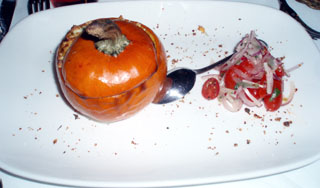
Ceviche Atun (left); Mini pumpkin with crabmeat (right)
Chef Julian Medina throws a lot of ingredients together; it doesn’t always work. Ceviche Atun had spicy yellowfin tuna, key lime, vidalia onion, radish, and watermelon. I like spicy food, but the tuna was overwhelmed. In my girlfriend’s shrimp ceviche, the flavor balance worked better.
The next dish was the item our server “upsold” us. Lump crabmeat and pumpkin came served inside a hot miniature pumpkin, with tortilla chips on the side. This inspiration looked like orange guacamole. There were some cool spots inside, suggestive of uneven heating, but it was still the best thing we had at Toloache.
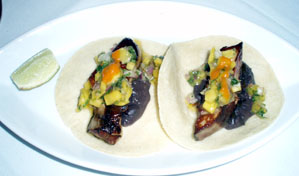
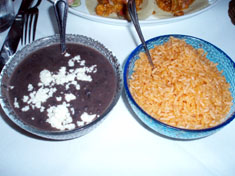
Foie Gras tacos (left); Rice & beans (right)
Foie gras tacos seemed, too, to suffer from too many ingredients: foie gras, refried beans, mango, red onion, and chipotle salsa. There was nothing wrong with the dish—how far wrong can you go with foie gras?—but it felt like a gimmick. Our side of rice & beans was fairly standard, and we didn’t finish it.
The restaurant is geared up to serve lots of people in a hurry. We noted tables turning fairly rapidly. There are probably some quality issues in the kitchen: in addition to our crabmeat salad not quite fully heated, we noted that a dish was sent back at the table next to us. There are a lot of clever ideas at Toloache, but you might need a bit of luck to put together a fully satisfying meal.
Toloache (251 W. 50th St. between Eighth Avenue & Broadway, Theater District)
Food: *
Service: *
Ambiance: *
Overall: *


